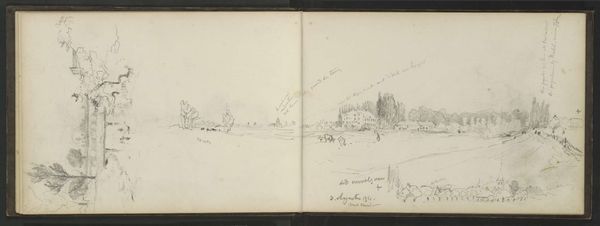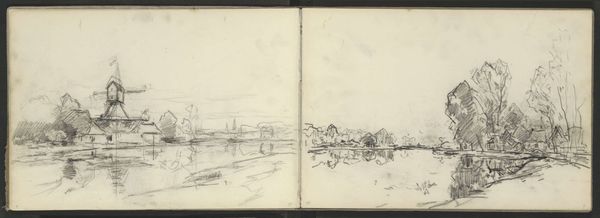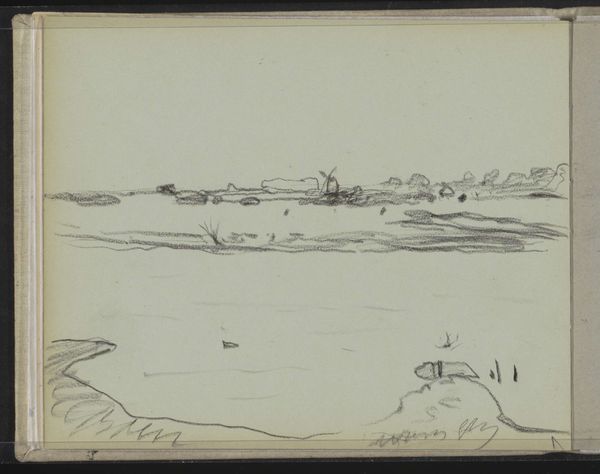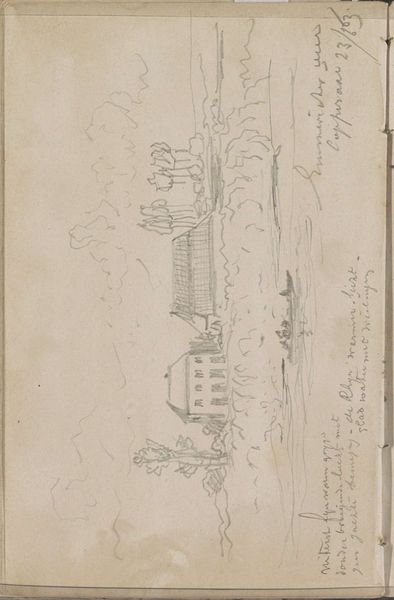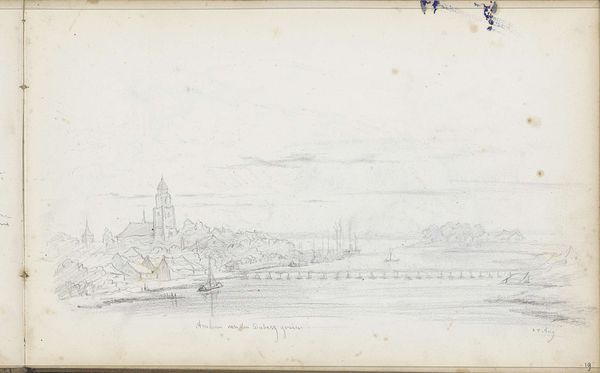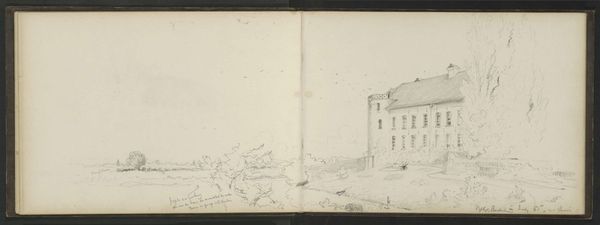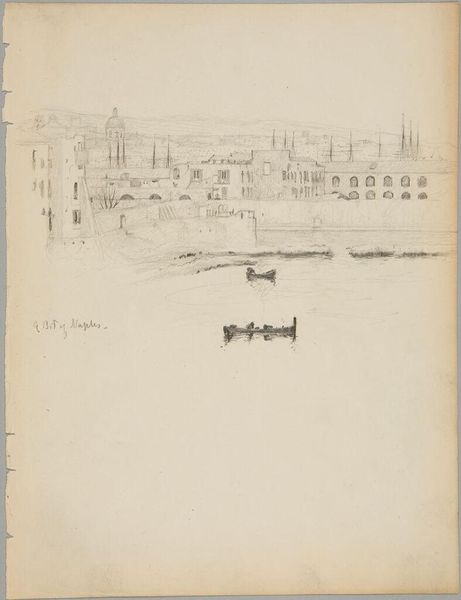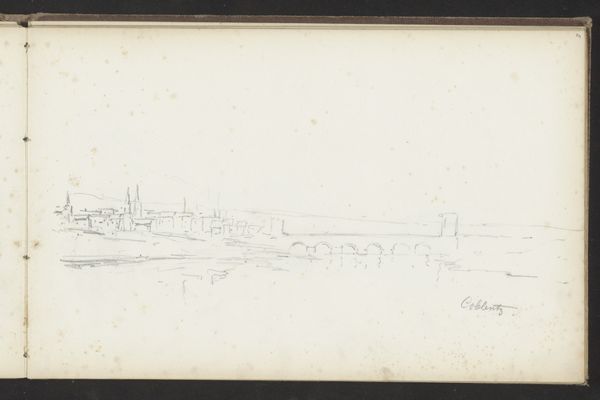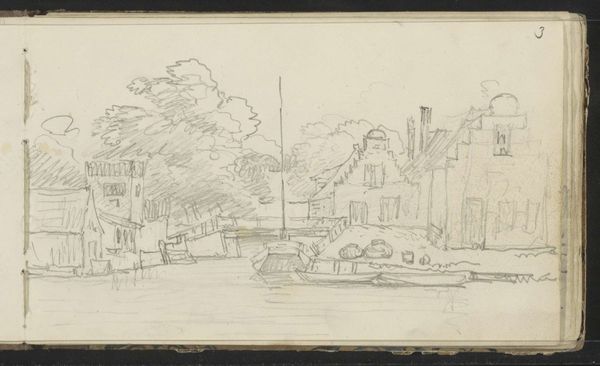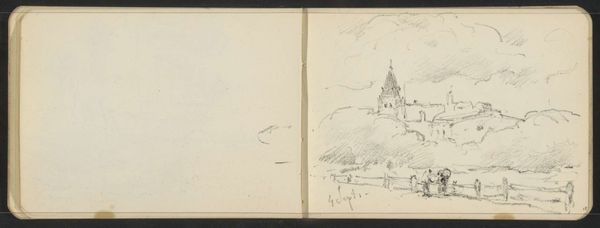
drawing, pencil
#
drawing
#
landscape
#
pencil
#
realism
Copyright: Rijks Museum: Open Domain
Curator: Today, we’re looking at "Slot Boetselaer in Kleef," a pencil drawing crafted between 1858 and 1870 by Johannes Tavenraat. It resides here at the Rijksmuseum. Editor: It's all about texture. I mean, look at how he teases out these different surfaces: the rough-hewn stone of the building versus the shimmering reflection on the water. There’s such a tactile quality. Curator: Tavenraat was part of a rising class of artists keen on documenting the changing Dutch landscape. Remember, this period was seeing increased industrialization; so depicting scenes of rural or historical importance became culturally charged acts. These drawings played a crucial role in defining national identity. Editor: And consider what a drawing like this would have represented in terms of labor and production. It is an item reflecting artisanal skill at a time of the rise of machine-led factories. It speaks to a slower process, a connection to place evident in the artist's patient strokes. It’s more than just a picture, it's a physical record of its own making. Curator: Precisely! It also captures the Romantic appreciation for nature, albeit filtered through the lens of impending societal shifts. It's as much about nostalgia as it is about the realistic depiction of a place. Think about the burgeoning tourist industry – works like these served as souvenirs, reinforcing narratives about 'authentic' Dutch experience. Editor: I am struck too by how simple materials, like pencil and paper, could render such complex sensations – depth, light, atmosphere. Pencil becomes almost alchemical in its transformatory power, elevated through artistic skill into a tool not just of recording but profound translation of the human experience. Curator: Ultimately, Tavenraat’s piece stands as both a product of its time, reflecting complex societal dynamics and shifts in artistic movements, and also stands as a prescient symbol anticipating modern landscape paintings. Editor: For me, looking at this now, I realize I can’t separate the work from its making. How did it happen, what materials were involved? The artistic touch makes the familiar remarkable again.
Comments
No comments
Be the first to comment and join the conversation on the ultimate creative platform.
